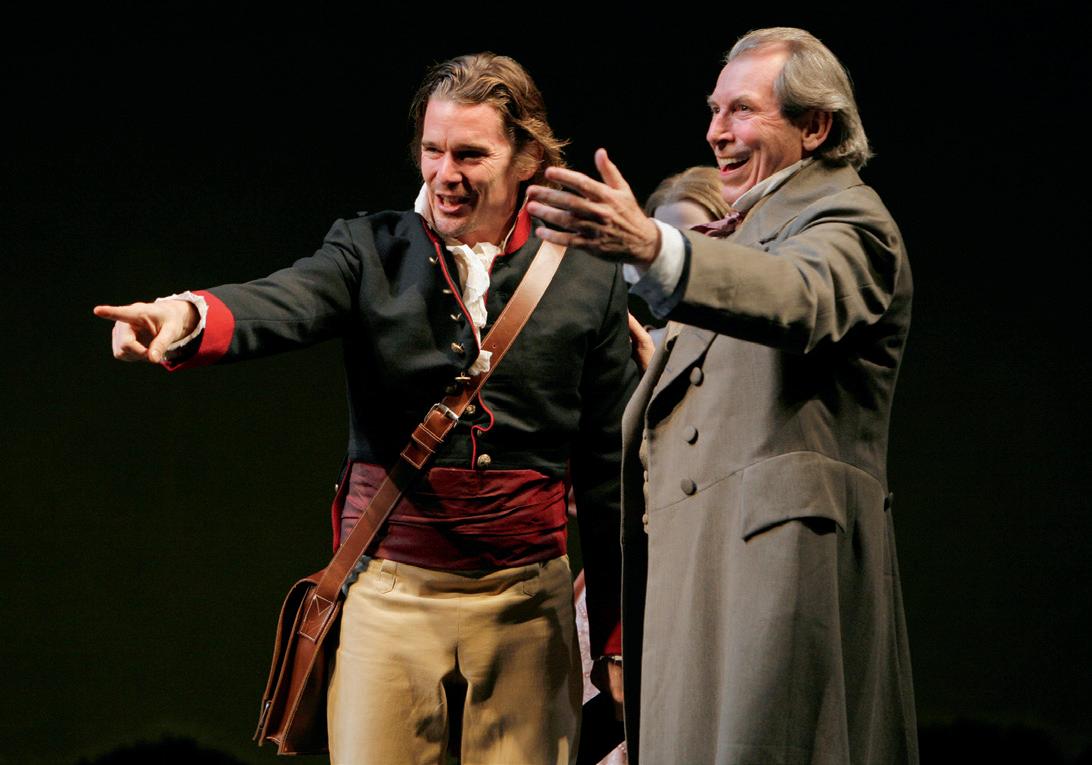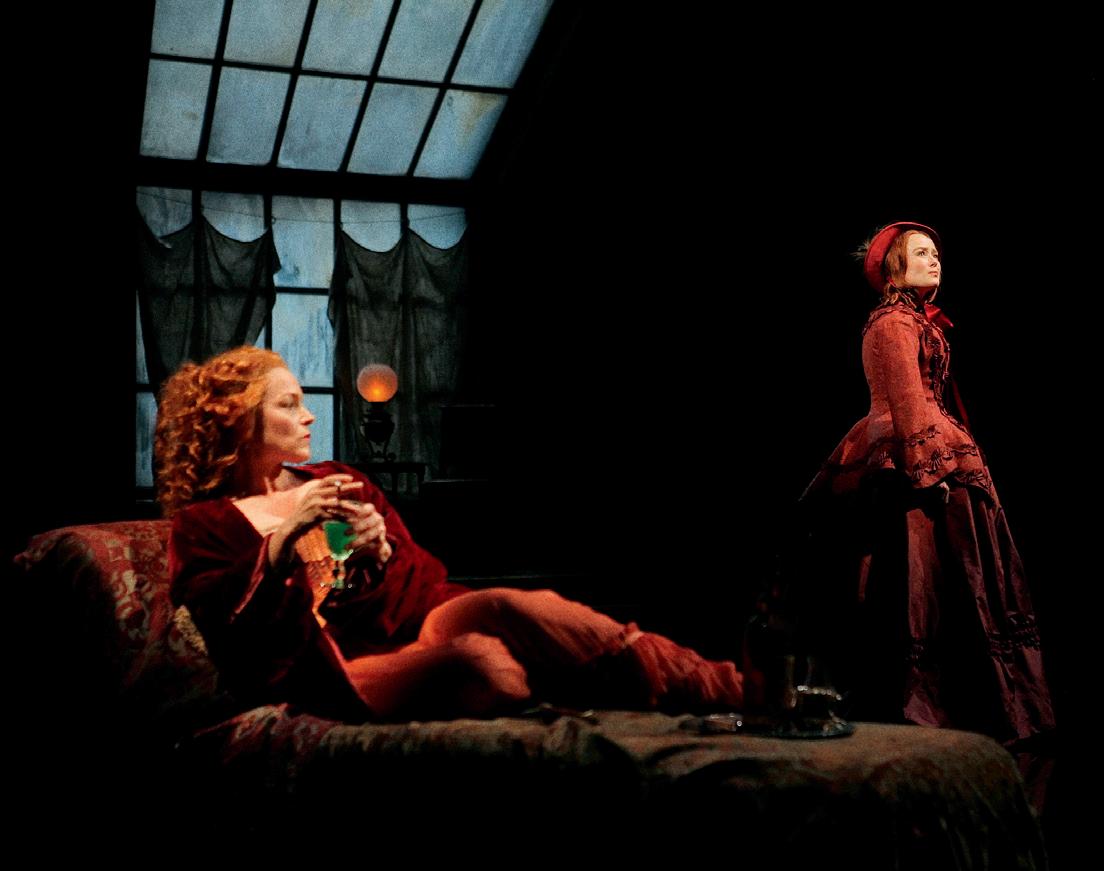
6 minute read
SECRET LIFE OF PLAYWRIGHTS
TOM STOPPARD
YOU DON’T THINK ABOUT writing a three-hour play unless you’re passionate about it. Or an eight-hour play. You don’t set out thinking, “Can I pull this off?” It only turns out to be eight hours because you’re passionate about it. Any writer will tell you this. I think every play I’ve written has come from several places simultaneously. That’s the point for me. They aren’t just plays that come out of one thought; they connect with others. However, in the case of The Coast of Utopia, I can remember one of the roots. Usually, I forget everything, but when I was in Czechoslovakia in 1977, everything was pretty tough. Many writers, artists, and actors were living twilight lives, unable to work. When I returned in 1990 after the fall of Communism, I noticed an irony in the huge political change. Before, things were published at some risk, receiving intense attention. People took note of the underground circulation of literature. But in the 1990s, there were suddenly a hundred literary magazines, and it was hard to get anyone’s attention. I was reminded of this when I came across the name of Vissarion Belinsky, one of the main characters in The Coast of Utopia. A similar, parallel thesis came to mind.
Belinsky was constantly in danger of being arrested. He had to write carefully and couldn’t publish what he wanted. But he preferred living under czarist despotism to the free-for-all beer garden of Paris in the 1840s. In Paris, so much was churned out daily that few writers and artists managed to be heard above the din. Belinsky liked being back home in St. Petersburg, where students would come early to the café to see if the magazine was in, read between the lines, and discuss it for half the night. Belinsky was important in that sense; what he wrote had significance under an oppressive regime, which would have dissipated in a free-for-all marketplace.
I had learned about Belinksy in Isaiah Berlin’s book Russian Thinkers. The central idea in Berlin’s thinking was the impossibility of a society satisfying every idea or philosophical wish list. He knew everything has to give way to something else because otherwise you’re trying to square a circle, and there are always bits left over. You can’t have absolute liberty and absolute equality or absolute justice and absolute mercy. This pluralism obsessed him. He felt this was what emerged out of 150 years of intellectual ferment since the Romantic Age and the Age of Enlightenment. It’s madness to think one ought to write a play about that. Plays are populated by people with husbands, wives, lovers, quarrels, growth, children, and all kinds of events that happen in every family. But I wanted to write a play about this. I was reading Berlin’s book and then got sidetracked by something else, the Bakunin Family. I thought, “God, there’s a play there.”
The Coast of Utopia is by no means a seminar. Or at least, I hope that’s true. It’s true to me. I’m sure that in every audience, some feel the balance is wrong—that it tips towards obsessiveness or a love of history and information for its own sake. Some critics say that too. Of course, there’s more than one view about almost every work of art, and certainly more than one view of a modern play, and definitely more than one view of this play. But I try to write plays I would like to see. Maybe I’ll amend that—it seems tautological. I try to like the plays I’d like to have written.
Putting The Coast of Utopia on stage was a gargantuan job. Jack O’Brien, who had directed my plays The Invention of Love and Hapgood at Lincoln Center Theater, wanted to do this one. We also brought on Bob Crowley, the scenic designer of both of those plays. I was thrilled about the three of us doing it together. I don’t know how many people were in the rehearsal room on the first day, but I’ve never seen so many people on the first day of a play. It was alarming. But the Lincoln Center Theater run of The Coast of Utopia gave me the chance to do what one should do to every play— step back and change things, add, and take away.
I love theater’s pragmatism. I love working on something alive, needing attention, and capable of going in different directions. That’s the joy for me. It’s a bit frightening that most of the time, you’re represented by 100 pages of text, and what happens to them is in the lap of other people and the gods. But now and again, especially in New York, one returns to a play. It’s an opportunity to do what theater does best: be live for you now at this moment. There’s no reason to simply disinter the previous conception and stand it up on a different stage in a different town. The art is in telling the audience so much and no more at the right moment and in the correct order. The audience sits with eyes and ears open, while you show and tell. Their response—amusement, boredom, captivation—depends on the quality of the performance and what meets their eyes. In my kind of theater, where text is transmuted into an event, the playwright doles out information. At the beginning of the evening, he has a large sack of information, and by the end, the audience has received its contents.
I love theorizing in these general terms about the art of theater and the art of playwriting, because what I love about it is that it’s a form of fiction for me. It has no reality or truth, these things I say, because when you’re writing a play, none of this is in your head at all. The problem is always, “What do I do now?”
This is the secret life of the playwright: While doing it, you have to maintain this delusion, this fantasy that this is the one which will completely knock them dead. That’s what makes it possible. You think, “Yes, this is it.” Of course, it never stays that way for you, but at least by then, you’ve done it, and you’ve got that to show.
This essay is adapted from a 2007 television interview with Mr. Stoppard.
YOU CAN'T HAVE ABSOLUTE LIBERTY AND ABSOLUTE EQUALITY OR ABSOLUTE JUSTICE AND ABSOLUTE MERCY. THIS PLURALISM OBSESSED [BELINSKY].













